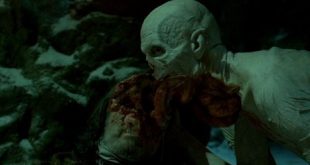Thought this was pretty cool and deserved some press for all the hard work they did. Pure costumes just released this infographic regarding the show ” American Horror Story” showcasing all kinds of historical data…check it out!
The start of Fall means a lot of exciting things, one of them being the arrival of new seasons of some of our favorite shows. American Horror Story has scared the pants off of us for 5 seasons, and we’re super excited and already have our pillows ready to hide behind for season 6. While everyone is patiently waiting for September 14th for new scares, we’ve been researching and compiled a few true stories that inspired American Horror Story and helped shape our favorite horror show.

Infographic Created by PureCostumes.com
Season 1: Murder House
The Black Dahlia: Mena Suvari guest-starred on AHS as Elizabeth Short, the woman who would become infamously known as The Black Dahlia. Short was a 22-year-old aspiring actress who was brutally murdered in 1947 in the city of Los Angeles. Her body was severed in half at the waist, but that wasn’t all. Her face was also cut from the corner of her mouth to her ears on both sides. Although over the years many men and women have confessed to her murder, her murderer has never been identified.
Richard Speck: The murders of two nurses are among the horrors we experienced at the Murder House. Ryan Murphy has said that this gruesome turn of events were inspired by Richard Speck’s mass murder in Chicago in 1966. Speck, armed with only a knife, broke into the dorm of student nurses and left 8 of them tortured, raped, and murdered in one single night.
Season 2: Asylum
Betty and Barney Hill: Kit and Alma are based on a real couple, Betty and Barney Hill. They were an interracial couple, a key detail used on the show. On September 19, 1961, just south of Lancaster, NH, the couple claimed to have been driving when they heard rhythmic beeping and buzzing sounds. The couple was then induced into an altered state of consciousness. When they reached full consciousness again, the couple found that they had traveled 35 miles, but only have spotty memories of the drive. Their experiences inspired a bestselling book, The Interrupted Journey.
Ed Gein: Dr. Oliver Thredsen, also known as Bloody Face, was inspired by the real life story of Ed Gein. Inside Thredsen’s house of horrors, several homemade items crafted from human body parts were showcased, such as an ashtray made from a human skull and a lampshade fashioned from human skin. These were replicas of actual items recovered from Gein’s home. Gein, a handyman, confessed to killing 2 women from 1954 to 1957. When searching for one of the women, authorities discovered horrifying items in Gein’s home, including bowls made from human skulls, skulls on his bedposts, and a waste basket made of human skin. Authorities also found wearable items made of human flesh, such as masks, a corset, and even leggings. In addition to the murders, Gein had also confessed to grave robbing, making as many as 40 visits to 3 local cemeteries to dig up bodies of women he felt resembled his mother. He would take the bodies home and use them to create his paraphernalia. When on trial, Gein pleaded not guilty by reason of insanity and was committed to a mental hospital for criminals. He was later diagnosed with schizophrenia.
Season 3: Coven
Madame LaLaurie: Portrayed by Kathy Bates on the show, Delphine LaLaurie was a prominent New Orleans socialite in the early 1800’s. In 1834, a fire broke out in the home of LaLaurie, starting in the kitchen. When authorities arrived, they discovered LaLaurie’s household cook chained to the stove. The woman confessed to starting the fire as a suicide attempt. Her reason for attempting suicide was fear of being taken to the attic as punishment. According to the cook, once someone was sent to the attic, they never returned. After further investigation, seven slaves were found in the attic, with all of them either mutilated or in torturous positions, such as wearing an iron collar and being suspended by the neck. It is unknown how many slaves LaLaurie actually tortured and killed, but it is said her house is still haunted today.
Axeman: Portrayed by Danny Huston on the show, the Axeman is based on a real murderer. Between 1918 and 1919, a series of similar crimes were committed in the New Orleans area. The murderer would use an axe or straight razor from the victim’s home to brutally end the victim’s lives. On March 13, 1919, the Axeman made a public threat that appeared in newspapers. He threatened to kill anyone in New Orleans not playing jazz that night. No murders were committed that night, but his true identity still remains unknown to this day.
Season 4: Freakshow
John Wayne Gacy: Although Twisty the Clown wasn’t directly inspired by John Wayne Gacy, the two are linked in our minds. After all, a man who dresses like a clown and kidnaps children is highly reminiscent of the real life Gacy. Gacy worked as a professional party clown and was known as “Pogo the Clown.” Between 1972 and 1978, he raped and killed at least 33 young men and buried most of them on the property of his Illinois home.
Schlitze Surtees: Schlitze Surtees was born with microcephaly, which caused him to develop a small brain and skull. Known as Schlitze the Pinhead, he was the inspiration for Pepper and Salty in AHS. Schlitze worked as a sideshow performer during the early 1900’s and was best known for his work in the 1937 film Freaks.
Season 5: Hotel
Richard Ramirez: Richard Ramirez, also known as the Night Stalker, was temporarily an occupant of the top floor of the Hotel Cecil in Los Angeles, one of the inspirations for Hotel Cortez in the show. Over the time he stayed at Hotel Cecil, Ramirez murdered 13 people, ditching his bloody clothes in dumpsters behind the hotel. To this day, the hotel struggles to shed its tainted image and is said to be haunted.
H.H. Holmes: Mr. James March, as portrayed by Evan Peters, is inspired by H.H. Holmes, who can be arguably considered America’s first serial killer. The design of Hotel Cortez is based on the hotel Holmes designed in Chicago, often referred to as his “Murder Castle.” Holmes designed his hotel specifically with murder in mind. He envisioned the hotel as a large maze and included rooms with trap doors, a room to gas his victims, and a hanging room. Holmes, being an educated doctor, would dispose of his victims by stripping their skeletons and selling their skeletons to medical schools.
 Horror News | HNN Official Site | Horror Movies,Trailers, Reviews
Horror News | HNN Official Site | Horror Movies,Trailers, Reviews





